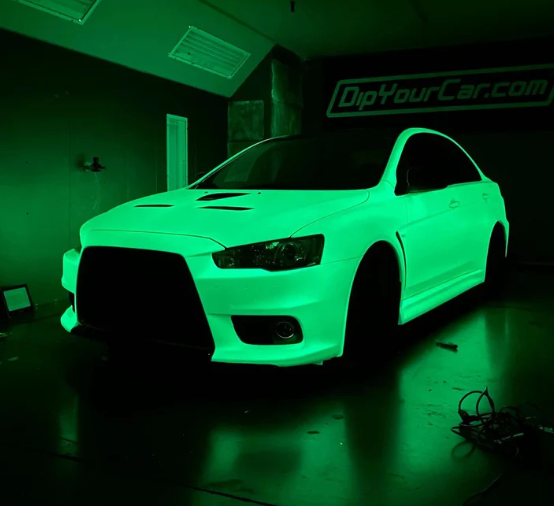Exploring the World of Glow In The Dark Pigments: Unleashing Creativity After Dark
Glow In The Dark Pigments have captivated the imagination of artists, designers, and hobbyists alike, offering a unique way to bring creativity to life when the lights go out. These fascinating pigments absorb and store light energy, only to release it in a mesmerizing glow when the environment darkens. Whether you're working on craft projects, safety signs, or artistic designs, Glow In The Dark Pigments can add an enchanting element to your work, creating an unforgettable visual impact.
How Do Glow In The Dark Pigments Work?
The science behind Glow In The Dark Pigments is both simple and intriguing. These pigments are made from phosphorescent materials that absorb light energy, typically from sources like sunlight or artificial lighting. Once the lights are turned off, the pigments release the stored energy in the form of visible light, resulting in a glowing effect that can last for several hours. The glow diminishes over time as the energy is gradually released, but it can be recharged repeatedly by exposing the pigments to light again.
The primary materials used in Glow In The Dark Pigments are strontium aluminate and zinc sulfide. Strontium aluminate is the more advanced and popular option, known for its longer-lasting and brighter glow. This makes it ideal for applications where a sustained glow is essential, such as in emergency exit signs, watch dials, and even artistic murals.
Applications of Glow In The Dark Pigments
Glow In The Dark Pigments are incredibly versatile, finding use across a wide range of industries and creative projects. In the safety industry, these pigments are used in signage, pathways, and emergency exits to ensure visibility in the dark. In the fashion world, they are used in clothing and accessories to create striking designs that stand out in low-light conditions.
Artists and crafters love incorporating Glow In The Dark Pigments into their work, adding a dynamic element that changes with the lighting. From glowing stars on ceilings to luminescent paintings, the possibilities are endless. These pigments are also popular in the world of toys and novelty items, where they add an extra layer of fun and intrigue.
Another interesting application is in the automotive industry, where Glow In The Dark Pigments are used for decorative purposes, such as in car decals and custom paint jobs. These pigments can also be added to epoxy resins, creating glowing countertops, floors, and other surfaces in homes and businesses.
Choosing the Right Glow In The Dark Pigments
When selecting Pigment Glow In The Dark, it's important to consider the intended application and the desired glow duration. Strontium aluminate pigments, for example, offer a more intense and longer-lasting glow, making them ideal for high-performance applications. On the other hand, zinc sulfide pigments are more affordable and still effective for shorter-term or less demanding uses.
Pigment Glow In The Dark can come in various colors, including green, blue, and aqua, with green typically offering the brightest and most prolonged glow. However, advancements in pigment technology are continually expanding the range of available colors, giving artists and designers even more options to experiment with.
Conclusion
Glow In The Dark Pigments and Pigment Glow In The Dark are more than just novelty items—they are powerful tools for creative expression and practical applications. Whether you're looking to enhance safety, create captivating art, or add a unique touch to everyday objects, these pigments offer endless possibilities. With their ability to charge and recharge with light, they provide a sustainable and reusable way to illuminate your world long after the sun sets.
Visit out social media pages:-
Visit our blog pages :-

Comments
Post a Comment